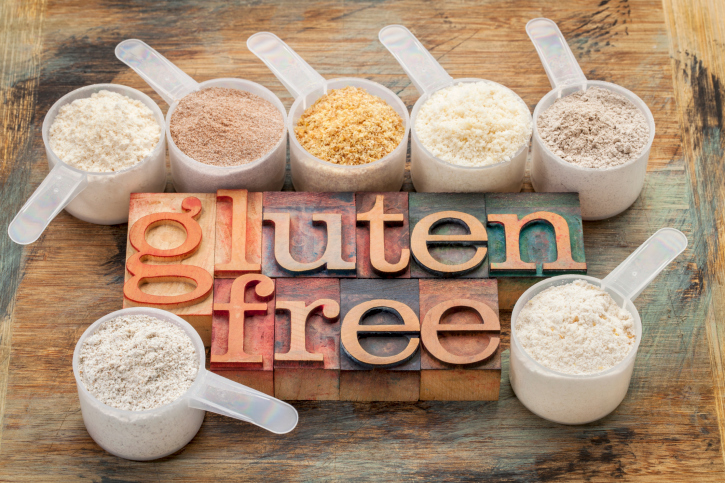
Whether you suffer from Celiac disease or have a gluten intolerance or sensitivity, if you’re adhering to a gluten-free diet, you probably already know that you can’t eat breads, pizza, pastries, and other foods that are made with wheat flour. But these items are not the only foods you should avoid if you’re avoiding gluten. If you are intolerant or sensitive to gluten—which is in not just wheat flour, but also barley, rye, spelt and more—it’s a good idea to get a handle on the common hidden sources of gluten so that you can do your best to avoid them, too. Some of these may surprise you!
- Salad dressing, gravy, Worcestershire sauce, barbecue sauce—many (but not all) sauces and condiments contain gluten-containing ingredients
- Breaded finger foods like mozzarella sticks and chicken fingers—they’re typically breaded with wheat flour
- Marinades—or pre-cooked meat that has already been marinated. Many (although not all) marinades have glutenous ingredients.
- Certain flavors of ice cream—while there are plenty of gluten-free ice cream choices out there, avoid flavors that contain chocolate chip cookie dough, brownie batter/pieces, graham cracker, and other similar treats that contain gluten.
- Bacon and other smoked meats/cold cuts—In some (but not all) cases, the smoking agent used on the meat is glutenous. Look for bacon and other meats that are labeled gluten-free.
- Oats—While oats are actually gluten-free, they’ve often been processed in facilities that process wheat. Your safest bet is to buy oats that are certified gluten-free.
- Flavored teas and coffees—These might seem innocuous, but many of the flavorings in these beverages contain gluten. Look for teas and coffees that are labeled gluten-free.
- Foods from the bulk bin or salad bar—While many foods offered here may be gluten-free, you don’t know whether the person who was there before you selected their food with the proper tongs, or whether they dipped the tongs from the pasta salad into the lettuce. The cross-contamination risk here is high; play it safe by avoiding these areas with shared serving utensils. Instead, pick your own veggies from the produce department, or buy a can of packaged nuts or candy that you’re sure is gluten-free.
- Lipstick, lip balm—It may come off on your lips as you eat, so if it’s glutenous, some of it may get swallowed along with food or drink. Although many manufacturers don’t list whether their lipsticks or other cosmetics are gluten-free, there are quite a few cosmetics companies that sell gluten-free lip products.
- Toothpaste and mouthwash—many are safe, but if you use one that contains gluten and you swallow it, you may experience symptoms
To ensure that a food is safe for you to eat, always read the product packaging. Some products may clearly state “gluten-free”; other products may say there are no gluten ingredients used, but that the food is produced in a facility that also produces wheat (which could lead to cross-contamination); some foods (like fresh fruits and veggies) are clearly innocuous; and other foods may have ingredient listings that are difficult to decipher. In general, if you aren’t absolutely certain that a food or beverage is gluten-free, your best bet is to call the product manufacturer, or visit their website, to get a definitive answer on a particular food, beverage, or personal care product.
It’s normal to feel overwhelmed when adhering to a diet that requires that you avoid eating certain foods, but good news—there are tons of delicious options available that are gluten-free. Not only are gluten-free food manufacturers making breads, cinnamon rolls, pizzas, pastas, snack foods, and more that are safe for you to eat, there are also plenty of foods that are naturally gluten-free. Vegetables, fruits, rice, potatoes, nuts, beans and quinoa are naturally gluten-free (just watch out for any flavorings or additives that render them unsafe for you to eat); many meats and cheeses are also gluten-free.
Are you interested in talking to a doctor about Celiac disease or finding out if a gluten-free diet is right for you? If you’re a Health Advocate member, call us to help you find an in-network primary care physician or a specialist (like a gastroenterologist) in your area. Remember, it’s best to not remove foods from your diet without consulting with a doctor first, so it’s a good idea to wait to speak to a health care professional before beginning a gluten-free diet.